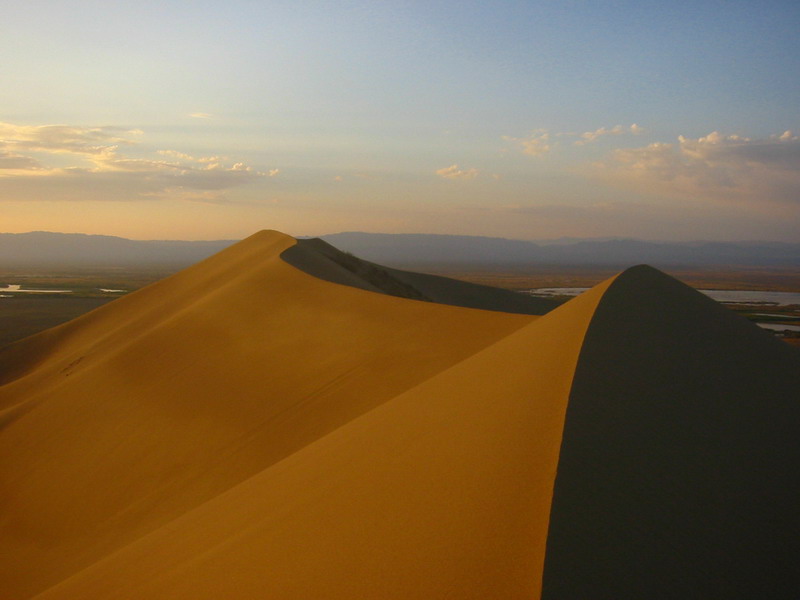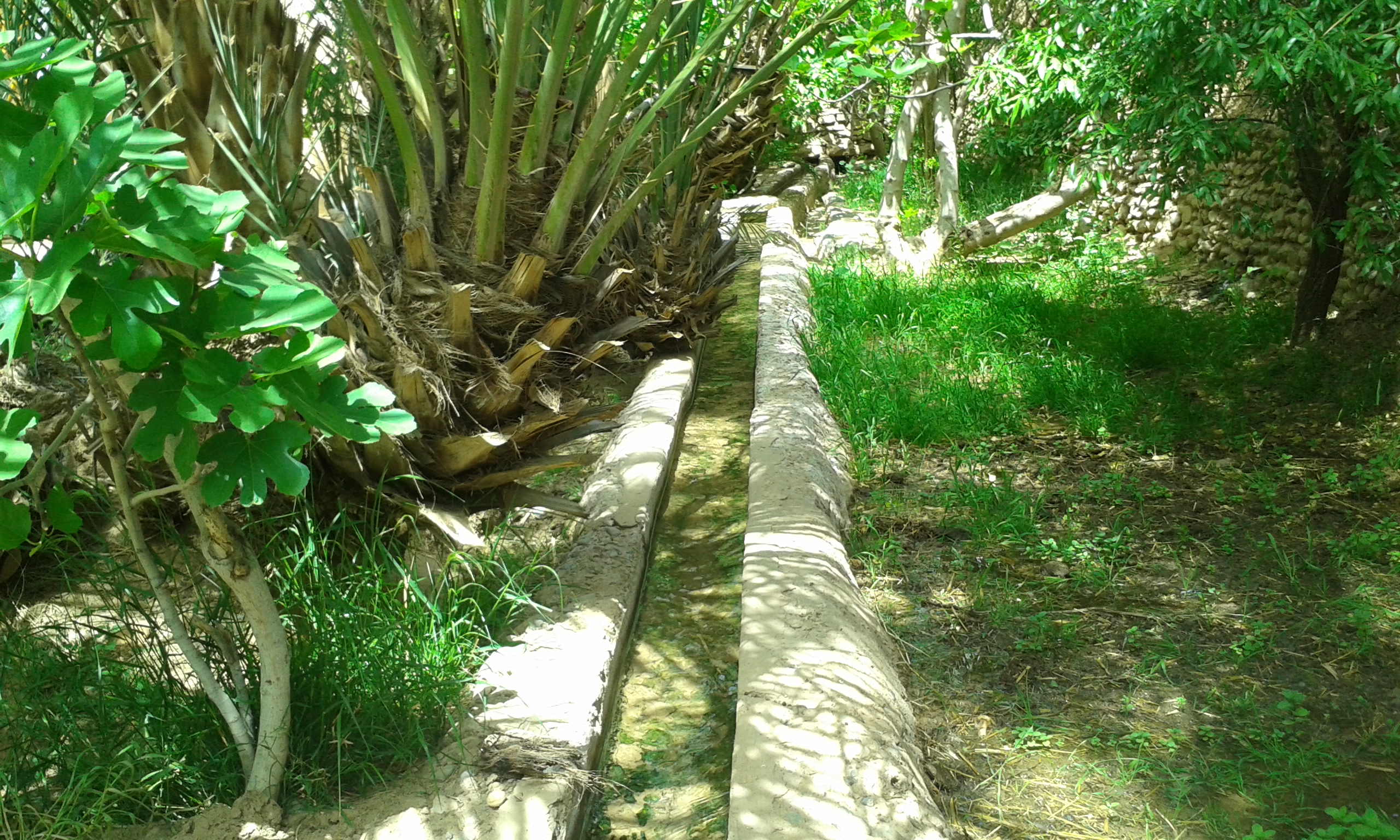|
Dunhuang
Dunhuang () is a county-level city in northwestern Gansu Province, Western China. According to the 2010 Chinese census, the city has a population of 186,027, though 2019 estimates put the city's population at about 191,800. Sachu (Dunhuang) was a major stop on the ancient Silk Road and is best known for the nearby Mogao Caves. Dunhuang is situated in an oasis containing Crescent Lake and Mingsha Shan (, meaning "Singing-Sand Mountain"), named after the sound of the wind whipping off the dunes, the singing sand phenomenon. Dunhuang commands a strategic position at the crossroads of the ancient Southern Silk Route and the main road leading from India via Lhasa to Mongolia and southern Siberia, and also controls the entrance to the narrow Hexi Corridor, which leads straight to the heart of the north Chinese plains and the ancient capitals of Chang'an (today known as Xi'an) and Luoyang. Administratively, the county-level city of Dunhuang is part of the prefecture-level city of ... [...More Info...] [...Related Items...] OR: [Wikipedia] [Google] [Baidu] |
Mogao Caves
The Mogao Caves, also known as the Thousand Buddha Grottoes or Caves of the Thousand Buddhas, form a system of 500 temples southeast of the center of Dunhuang, an oasis located at a religious and cultural crossroads on the Silk Road, in Gansu province, China. The caves may also be known as the Dunhuang Caves; however, this term is also used as a collective term to include other Buddhist cave sites in and around the Dunhuang area, such as the Western Thousand Buddha Caves, Eastern Thousand Buddha Caves, Yulin Caves, and Five Temple Caves. The caves contain some of the finest examples of Buddhist art spanning a period of 1,000 years. The first caves were dug out in 366 CE as places of Buddhist meditation and worship; later the caves became a place of pilgrimage, and caves continued to be built at the site until the 14th century. The Mogao Caves are the best known of the China, Chinese Buddhist grottoes and, along with Longmen Grottoes and Yungang Grottoes, are one of the three fa ... [...More Info...] [...Related Items...] OR: [Wikipedia] [Google] [Baidu] |
Gansu
Gansu is a provinces of China, province in Northwestern China. Its capital and largest city is Lanzhou, in the southeastern part of the province. The seventh-largest administrative district by area at , Gansu lies between the Tibetan Plateau, Tibetan and Loess Plateau, Loess plateaus and borders Mongolia's Govi-Altai Province, Inner Mongolia and Ningxia to the north, Xinjiang and Qinghai to the west, Sichuan to the south and Shaanxi to the east. The Yellow River passes through the southern part of the province. Part of Gansu's territory is located in the Gobi Desert. The Qilian Mountains, Qilian mountains are located in the south of the Province. Gansu has a population of 26 million, ranking List of Chinese administrative divisions by population, 22nd in China. Its population is mostly Han Chinese, Han, along with Hui people, Hui, Dongxiangs, Dongxiang and Tibetan people, Tibetan minorities. The most common language is Mandarin. Gansu is among the poorest administrative divi ... [...More Info...] [...Related Items...] OR: [Wikipedia] [Google] [Baidu] |
Jiuquan
Jiuquan, formerly known as Suzhou is a prefecture-level city in the northwesternmost part of Gansu Province in the People's Republic of China. It is more than wide from east to west, occupying , although its built-up area is mostly located in its Suzhou District. Name The city was formerly known as Fulu, which became known as Suzhou (Suchow, Su-chow, &c.) after it became the seat of Su Prefecture under the Sui.485 As the seat of , it eventually became known by that name in turn. The name Jiuquan —" spring(s)" — ... [...More Info...] [...Related Items...] OR: [Wikipedia] [Google] [Baidu] |
Hexi Corridor
The Hexi Corridor ( ), also known as the Gansu Corridor, is an important historical region located in the modern western Gansu province of China. It refers to a narrow stretch of traversable and relatively arable plain west of the Yellow River's Ordos Loop (hence the name ''Hexi'', meaning 'west of the river'), flanked between the much more elevated and inhospitable terrains of the Mongolian and Tibetan Plateaus. As part of the Northern Silk Road, running northwest from the western section of the Ordos Loop between Yinchuan and Lanzhou, the Hexi Corridor was the most important trade route in Northwest China. It linked China ''proper'' to the historic Western Regions for traders and military incursions into Central Asia. It is a string of oases along the northern edges of the Qilian Mountains and Altyn-Tagh, with the high and desolate Tibetan Plateau further to the south. To the north are the Longshou, Heli and Mazong Mountains separating it from the arid Badain Jaran D ... [...More Info...] [...Related Items...] OR: [Wikipedia] [Google] [Baidu] |
Guazhou County
Guazhou County (), formerly (until 2006) Anxi County (), is a county in the northwest of Gansu province, China. It is under the administration of Jiuquan City. History Emperor Wudi (140-87 BCE) had the Great Wall extended northwestward all the way to the Gate of Jade ( Yumen Pass), the westernmost garrison town near Dunhuang. He then set up a system of garrisons all along this part of the Great Wall and put its headquarters in a town called Anxi (“Tranquil West”) and where the northern and southern Silk Routes historically diverged." The name Guazhou (land/prefecture of melons) has a long contentious history; the name first appeared in records from the Warring States period, but Chinese historians have debated (since the 3rd century) whether it referred to a region in modern-day Gansu or Shaanxi. From Northern Wei to Sui dynasty, Guazhou Prefecture contained both modern-day Dunhuang and Guazhou counties; in the Tang dynasty, the western region surrounding Dunhuang was re ... [...More Info...] [...Related Items...] OR: [Wikipedia] [Google] [Baidu] |
Crescent Lake (Dunhuang)
Yueyaquan () is a crescent-shaped lake in an oasis, 6 km south of the city of Dunhuang in Gansu Province, China. History The lake was named Yueyaquan in the Qing Dynasty. Mildred Cable and Francesca French visited the lake during their travels in the region in 1932 and recorded their impressions in their book ''The Gobi Desert'': "All around us we saw tier on tier of lofty sand-hills, giving the lie to our quest, yet when, with a final desperate effort, we hoisted ourselves over the last ridge and looked down on what lay beyond, we saw the lake below, and its beauty was entrancing." According to measurements made in 1960, the average depth of the lake was , with a maximum depth of . In the following 40 years, the depth of the lake declined by more than . In the early 1990s, it had shrunk to an average depth of one meter. In 2006, the local government with help of the central government started to fill the lake and restore its depth; its depth and size have been growing y ... [...More Info...] [...Related Items...] OR: [Wikipedia] [Google] [Baidu] |
Silk Route
The Silk Road was a network of Asian trade routes active from the second century BCE until the mid-15th century. Spanning over , it played a central role in facilitating economic, cultural, political, and religious interactions between the Eastern and Western worlds. The name "Silk Road" was coined in the late 19th century, but some 20th- and 21st-century historians instead prefer the term Silk Routes, on the grounds that it more accurately describes the intricate web of land and sea routes connecting Central, East, South, Southeast, and West Asia as well as East Africa and Southern Europe. The Silk Road derives its name from the highly lucrative trade of silk textiles that were primarily produced in China. The network began with the expansion of the Han dynasty (202 BCE220 CE) into Central Asia around 114 BCE, through the missions and explorations of the Chinese imperial envoy Zhang Qian, which brought the region under unified control. The Chinese took ... [...More Info...] [...Related Items...] OR: [Wikipedia] [Google] [Baidu] |
Singing Sand Dunes (Dunhuang)
The Singing Sand Dunes ( Pinyin: míng shā shān) in Dunhuang, China, are the sand dunes that, when the wind blows, give out a singing or drumming sound. They are part of the Kumtag Desert. The Singing Sand Dunes were originally known as the "Gods' Sand Dunes" (). In the ''Records of the Grand Historian'', Sima Qian described the sound "as if listening to music when the weather is fine." During the Ming Dynasty, they came to be called by the current name. There are four better-known singing sand dunes in China, that include those of Hami, which are usually said to give the best sound among the four, and those of Dunhuang. The tourist area at the site offers various facilities and activities such as ATV riding, paragliding, camel rides and sandboarding. See also * Singing sand *Mogao Caves The Mogao Caves, also known as the Thousand Buddha Grottoes or Caves of the Thousand Buddhas, form a system of 500 temples southeast of the center of Dunhuang, an oasis located at a r ... [...More Info...] [...Related Items...] OR: [Wikipedia] [Google] [Baidu] |
Singing Sand
Singing sand, also called whistling sand, barking sand, booming sand or singing dune, is sand that produces sound. The sound emission may be caused by wind passing over dunes or by walking on the sand. Certain conditions have to come together to create singing sand: # The sand grains have to be round and between 0.1 and 0.5 mm in diameter. # The sand has to contain silica. # The sand needs to be at a certain humidity. The most common frequency emitted seems to be close to 450 hertz, Hz. There are various theories about the singing sand mechanism. It has been proposed that the sound frequency is controlled by the shear rate. Others have suggested that the frequency of vibration is related to the thickness of the dry surface layer of sand. The sound waves bounce back and forth between the surface of the dune and the surface of the moist layer, creating a resonance that increases the sound's volume. The noise may be generated by friction between the grains or by the compre ... [...More Info...] [...Related Items...] OR: [Wikipedia] [Google] [Baidu] |
Qiang (historical People)
Qiang () was a name given to various groups of people at different periods in ancient China. The Qiang people are generally thought to have been of Tibeto-Burman languages, Tibeto-Burman origin, though there are other theories. The Tangut people of the Tang dynasty, Tang, Song dynasty, Song and Yuan dynasty, Yuan dynasties may be of Qiang descent. The modern Qiang people as well as Tibetan people, Tibetans may also have been descended in part from the ancient Qiang. Etymology According to the Han dynasty dictionary ''Shuowen Jiezi'', the Qiang were shepherds, and the Chinese character for Qiang () was thus formed from the characters for "sheep" (羊) and "man" (人), and pronounced like the word for "sheep".Shouwen Original text: 羌:西戎牧羊人也。从人从羊,羊亦聲。 ''Fengsu Tongyi'' also mentions that character of Qiang ... [...More Info...] [...Related Items...] OR: [Wikipedia] [Google] [Baidu] |
Oasis
In ecology, an oasis (; : oases ) is a fertile area of a desert or semi-desert environmentBattesti, Vincent (2005) Jardins au désert: Évolution des pratiques et savoirs oasiens: Jérid tunisien. Paris: IRD éditions. . that sustains plant life and provides habitat for animals. Surface water may be present, or water may only be accessible from wells or underground channels created by humans. In geography, an oasis may be a current or past rest stop on a transportation route, or less-than-verdant location that nonetheless provides access to underground water through deep wells created and maintained by humans. Although they depend on a natural condition, such as the presence of water that may be stored in reservoirs and us ... [...More Info...] [...Related Items...] OR: [Wikipedia] [Google] [Baidu] |






